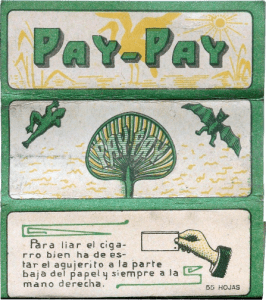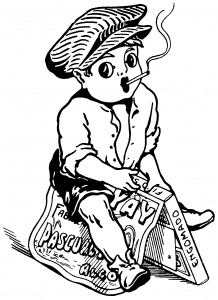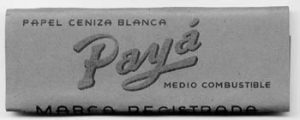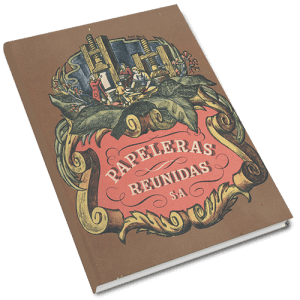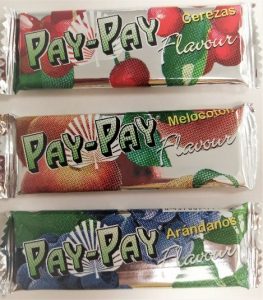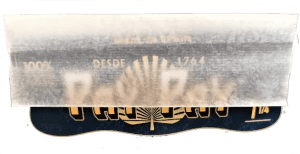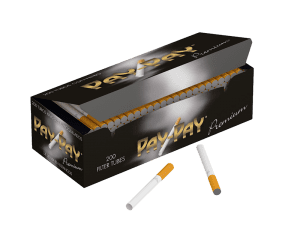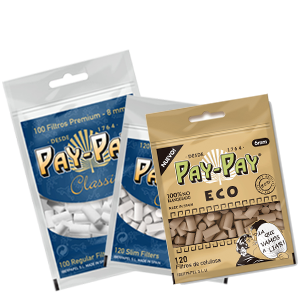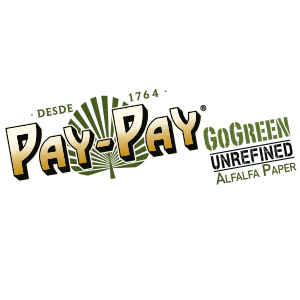History
PAY-PAY is the oldest rolling paper in the world. Made since 1764 in the legendary paper making town of Alcoy (Alicante province, Spain), from which it was exported to many countries, especially in America, in most cases in return for tobacco.
More than 250 years later, PAY-PAY is still made near Alcoy, in Benimarfull, remaining faithful to its original spirit. A modern factory located there –Iberpapel– has managed to maintain the old Alcoy-based paper making tradition, adapting it to the new times.
Respect for the heritage received, creativity and passion are the main ingredients of a legacy which continues to be passed on from generation to generation.
Telling PAY-PAY’s history is telling the history of rolling paper itself.
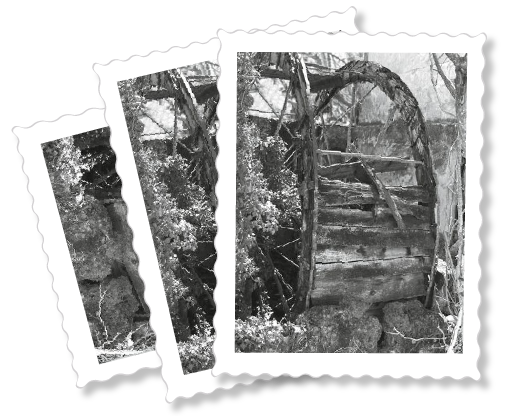
1764
The first smoking paper mill is installed in Alcoy
Halfway through the 18th century in Spain, it had become a widespread habit to smoke tobacco brought from the Americas. However, in Europe, tobacco was an extremely expensive product to be smoked on the actual plant leaves, which is why many people chose to consume it in the form of powder or wrapped in newspaper.
In order to prevent that thick paper with ink from being smoked, the entrepreneurs of the time devised a paper which was slimmer than usual, 40 grs/m2, and white, made in big leaves the size of a sheet (double folio) that smokers could cut according to their taste and need. This paper exclusively conceived for smoking, a wonderful find, soon starts to have a lot of success all over the world. This is the primitive PAY-PAY from Alcoy.
1815
The smoking paper booklet is invented
The start of the 19th century marks a decline in the fashion for powder tobacco; the custom of rolling it spreads, and the need arises to serve paper in a size better suited to cigarettes. A Dominican from the city of Xàtiva (Valencia Province, Spain), Father Jaime Villanueva Estingo, invents the smoking paper booklet: a delicate object and a magnificent invention, the use of which has survived to the present day. Smoking paper booklet workshops multiplied in Alcoy, with PAY-PAY’s standing out from all the others. Its covers showed beautiful engravings beside the name of the manufacturer –Pascual Ivorra. Long series were also printed on them about the history of Spain, about famous figures and celebrities, about habits, costumes, allegories, sayings… thus providing us today with a complete overview of the evolution in the society and traditions of the time.
1934
PAY-PAY is integrated into Papeleras Reunidas, S.A.
The numerous Alcoy-based paper workshops decided to pool their resources and open a larger factory that could fight more strongly with its competitors. It was given the name of Papeleras Reunidas [United Paper Mills] to show that they all worked together as if they were a single workshop.
Each one of the different manufacturers brought its own brands and knowledge to the new common project which eventually became a great multinational. Pascual Ivorra Carbonell joined it with his ‘PAY-PAY’ brand, along with other world-famous ones, such as ‘Bambú [Bamboo].’
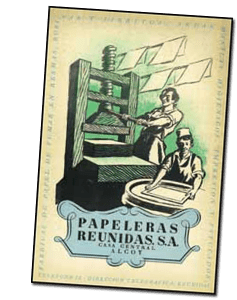
1980
Papeleras Reunidas must to close
The multinational from Alcoy cannot continue with its operation and is forced to close. But it wasn’t all bad news, mr. José Emilio, who started in Papeleras Reunidas as a technician and who was stationed in Buenos Aires in the 70s at the head of a subsidiary of the company, did not believe that this was the end of the Alcoy paper industry …
1988
The current PAY-PAY Factory –Iberpapel, S.L.– is founded
José Emilio’s business intuition, when Papeleras Reunidas closed, led him to keep some paper machines in exchange for continuing with the activity and production of the PAY-PAY brand.
The beginnings, already alone, were difficult but the readjustment was quick.
They invested in new personnel and machinery and by applying processes, they evolved, maintaining the essence of good work in the manufacture of paper books.

1990
New Pay-Pay design
Keeping the essential elements in the old Pay-Pay design, as are the bats and frogs on the background and the characteristic pay-pay (Chinese fan) of the logo, a gradual re-adaptation was made of the design, of which copies can be found in important smoking paper collections nowadays.

1995
PAY-PAY Aromas starts to be produced
With the re-adaptation of the machines from Papeleras Reunidas and using the knowledge acquired there, the team created by José Emilio in the new factory started to manufacture something which had not been made for a long time and which turned out to be a complete novelty in the market: smoking paper with aromas.
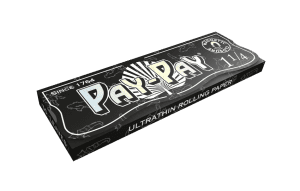
2003
Magnetic Pay-Pay is born
If Pay-Pay has always been a synonym of innovation (see the invention patent to stick the cigarette properly without light, or the aromas), a new innovation is put into practice this year: the booklet magnetic closure for it to stay like new until the last of its leaves is used.
2019
The generational change comes at the hands of a board of directors and a group of young people with great initiative and creativity. With a vision for the future, based on user needs, sustainability and care for the environment, PAY-PAY continues to create new products and improve user experiences.

